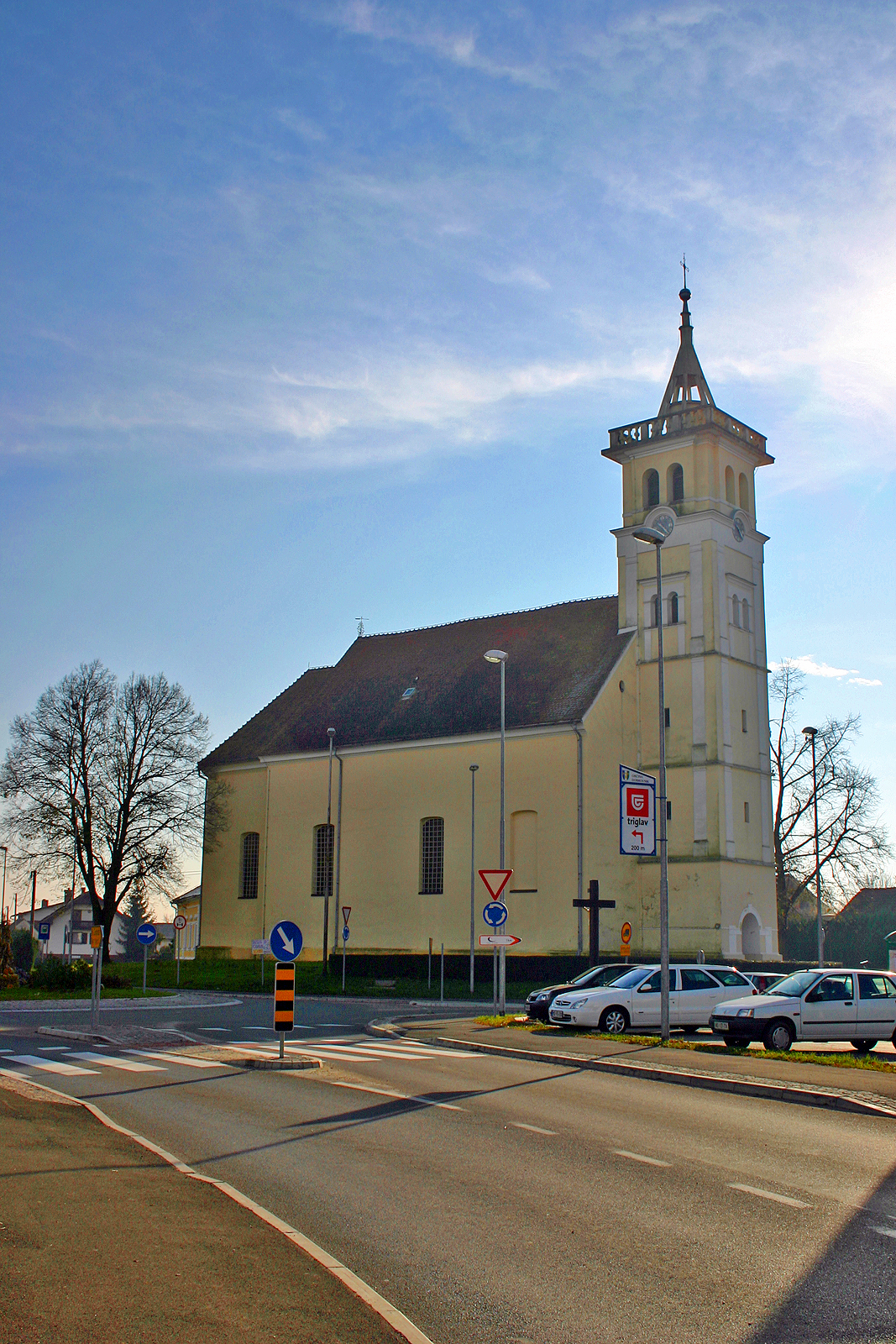Dobrovnik on:
[Wikipedia]
[Google]
[Amazon]
Dobrovnik (; hu, Dobronak, ) is a village in
 A church dedicated to Saint James was mentioned in Dobrovnik in 1334. A second church was built in 1668, and was damaged in the fire of 1747. A new church was built between 1794 and 1796. Like its predecessors, it is dedicated to Saint James and belongs to the Murska Sobota Diocese.
A church dedicated to Saint James was mentioned in Dobrovnik in 1334. A second church was built in 1668, and was damaged in the fire of 1747. A new church was built between 1794 and 1796. Like its predecessors, it is dedicated to Saint James and belongs to the Murska Sobota Diocese.Dobrovnik municipal site
/ref> The church also has a Calvary shrine created by the painter Lajči Pandur (1913–1973), a cemetery, and a cemetery chapel.
Dobrovnik on Geopedia
{{Dobrovnik Populated places in the Municipality of Dobrovnik
Slovenia
Slovenia ( ; sl, Slovenija ), officially the Republic of Slovenia (Slovene: , abbr.: ''RS''), is a country in Central Europe. It is bordered by Italy to the west, Austria to the north, Hungary to the northeast, Croatia to the southeast, an ...
and is the seat of the Municipality of Dobrovnik
The Municipality of Dobrovnik ( sl, Občina Dobrovnik ; hu, Dobronak község ) is a municipality in Slovenia. The seat of the municipality is Dobrovnik ( hu, Dobronak). It is located in the Prekmurje region. It has a significant Hungarian eth ...
. It is located in the Prekmurje
Prekmurje (; dialectically: ''Prèkmürsko'' or ''Prèkmüre''; hu, Muravidék) is a geographically, linguistically, culturally and ethnically defined region of Slovenia, settled by Slovenes and a Hungarian minority, lying between the Mur R ...
region. It has a significant Hungarian ethnic community.
Name
Dobrovnik was attested in written sources in 1322 as ''Dobronok'' (and as ''Dobronuk'' in 1322/35, and as ''Drobronak'' and ''Dabronuk'' in 1323). The early Slavic form of the name was ''*Dǫbrovъnikъ'', derived from ''*dǫbrova'' 'oak woods, deciduous woods'.History
Early settlement of the area is attested by the discovery of a prehistoric stone chisel and 21burial mounds
A tumulus (plural tumuli) is a mound of earth and stones raised over a grave or graves. Tumuli are also known as barrows, burial mounds or ''kurgans'', and may be found throughout much of the world. A cairn, which is a mound of stones built ...
south of the village. Excavations of the burial mounds have revealed cremation burials from the 1st and 3rd centuries AD as well as pottery, glass, and metal items.
Dobrovnik was first mentioned in written sources dating to 1270. It was mentioned as a market in 1334 in connection with the Bánffy estates. There were 21 farms in the village in 1381. The market was fortified with trenches and there was also a castle in the 16th century. Dobrovnik was burned in an Ottoman attack in 1502. The continued threat of Ottoman attacks resulted in very slow development of the settlement over the next two centuries.
A parish school was established before 1669, when a visitation report stated that there was a teacher but no pupils in the village. In 1747 the entire village was badly damaged in a fire. Another parish school was reestablished in 1838; instruction took place in the rectory and in private houses until a school building was built in 1856. After the abolition of serfdom in 1848, the large states were broken up and the population grew significantly. A fire station was established in Dobrovnik in 1910.Savnik, Roman, ed. 1980. ''Krajevni leksikon Slovenije'', vol. 4. Ljubljana: Državna založba Slovenije. pp. 102–103.
Unmarked graves
Dobrovnik is the site of five knownunmarked graves
In linguistics and social sciences, markedness is the state of standing out as nontypical or divergent as opposed to regular or common. In a marked–unmarked relation, one term of an opposition is the broader, dominant one. The dominant defau ...
from the end of the Second World War, each containing the remains of a German soldier killed in April 1945 during the German withdrawal and Red Army
The Workers' and Peasants' Red Army ( Russian: Рабо́че-крестья́нская Кра́сная армия),) often shortened to the Red Army, was the army and air force of the Russian Soviet Federative Socialist Republic and, afte ...
advance. The Štihthaber Grave ( sl, Grob pri Štihthaberjevih) lies in the woods northeast of the church. The Pap-Hegy Crossroads Grave (), also known as the Popov Breg Grave (), is located in an abandoned gravel pit about north of the church. The Pap-Hegy Göntér Cellar Grave () lies on the edge of a vineyard about north-northeast of the church. The Szent Janos Grave () is located about north-northwest of the church, below a large oak tree near a field above Bukovnica Creek. The Bank Grave () lies in the middle of the settlement, under asphalt paving between a meadow and the former bank (at Dobrovnik no. 298).
Church
 A church dedicated to Saint James was mentioned in Dobrovnik in 1334. A second church was built in 1668, and was damaged in the fire of 1747. A new church was built between 1794 and 1796. Like its predecessors, it is dedicated to Saint James and belongs to the Murska Sobota Diocese.
A church dedicated to Saint James was mentioned in Dobrovnik in 1334. A second church was built in 1668, and was damaged in the fire of 1747. A new church was built between 1794 and 1796. Like its predecessors, it is dedicated to Saint James and belongs to the Murska Sobota Diocese./ref> The church also has a Calvary shrine created by the painter Lajči Pandur (1913–1973), a cemetery, and a cemetery chapel.
Notable people
Notable people that were born or lived in Dobrovnik include: * Evgen Car (born 1944), theater actor and playwright *Žiga Laci (born 2002), professional football playerReferences
External links
*Dobrovnik on Geopedia
{{Dobrovnik Populated places in the Municipality of Dobrovnik